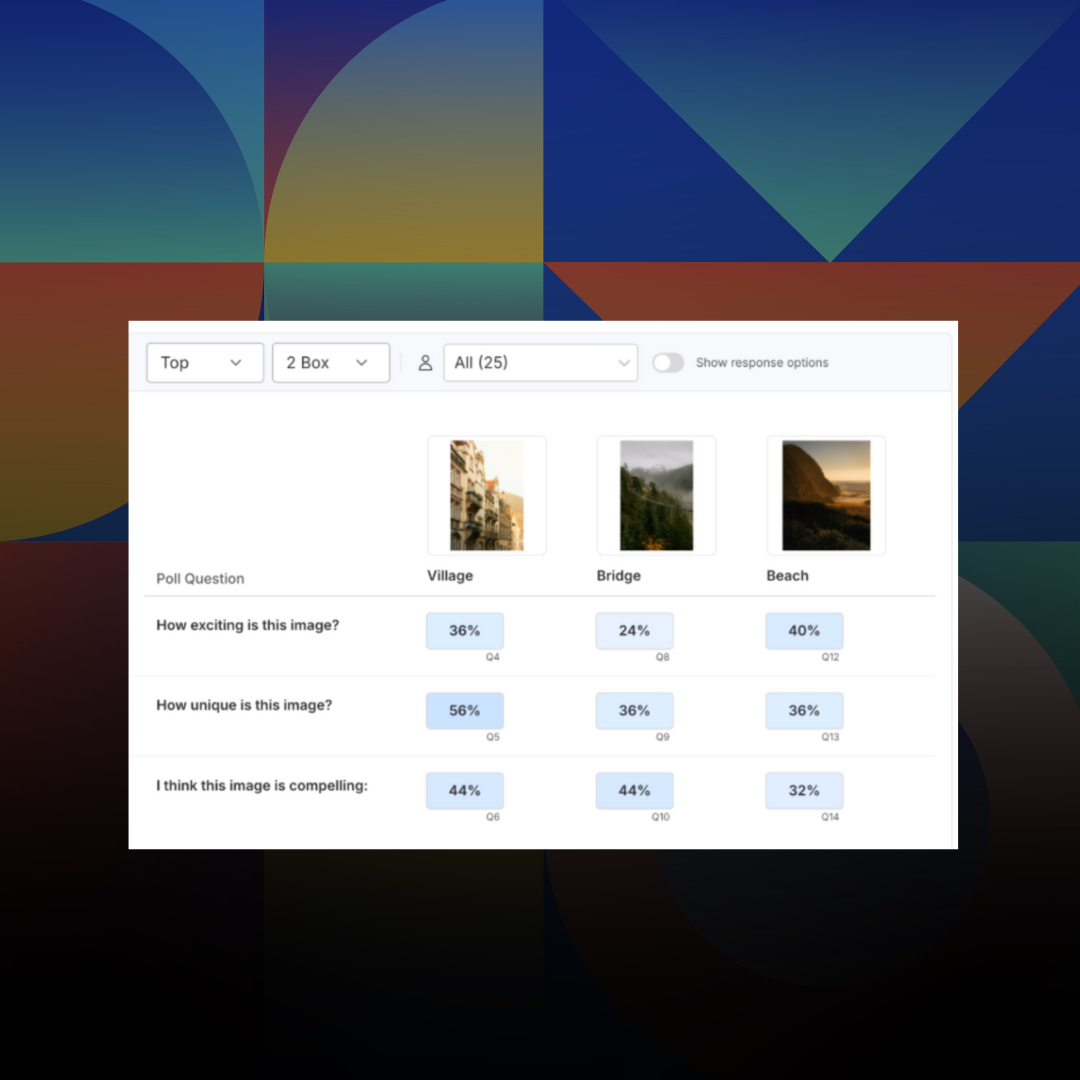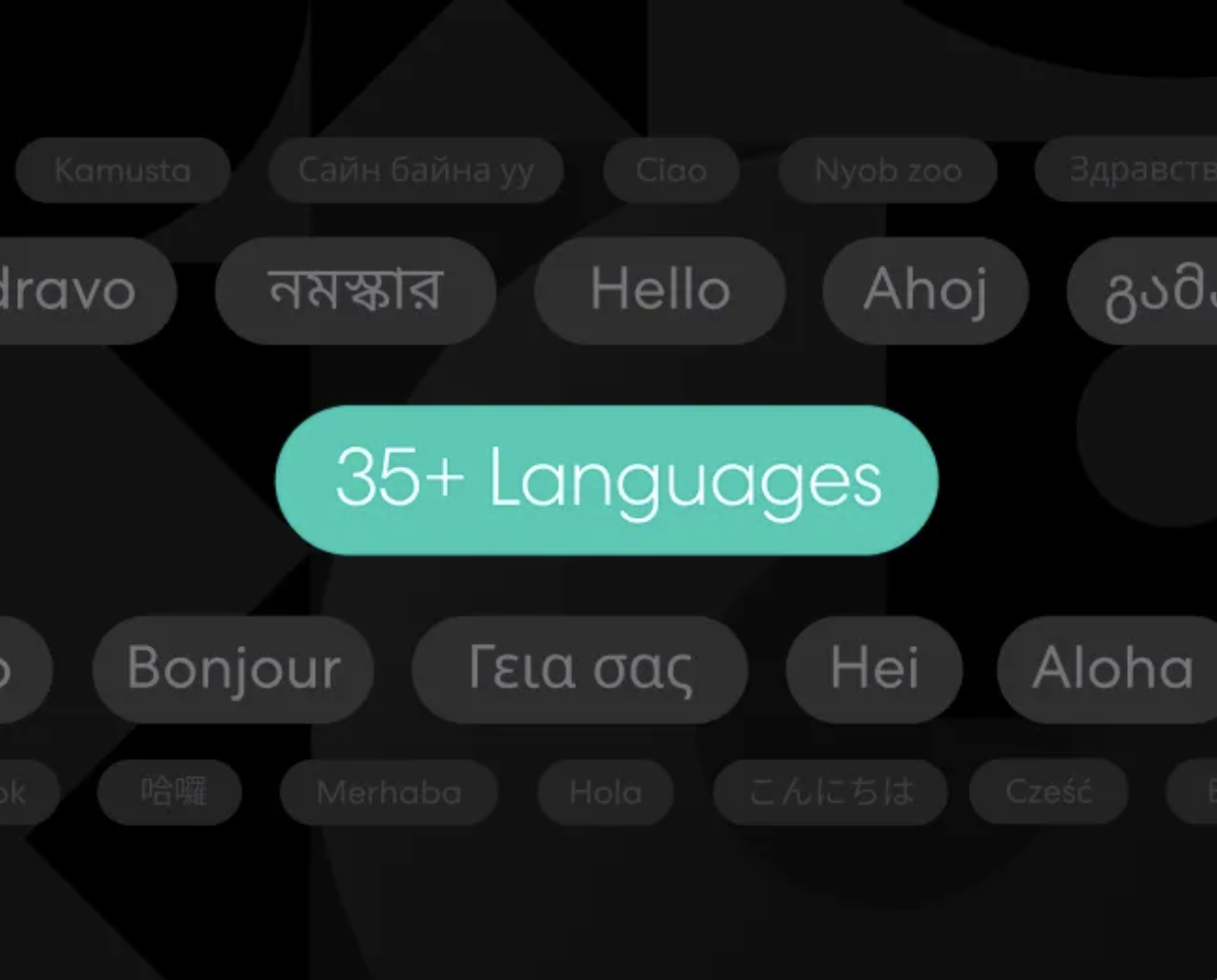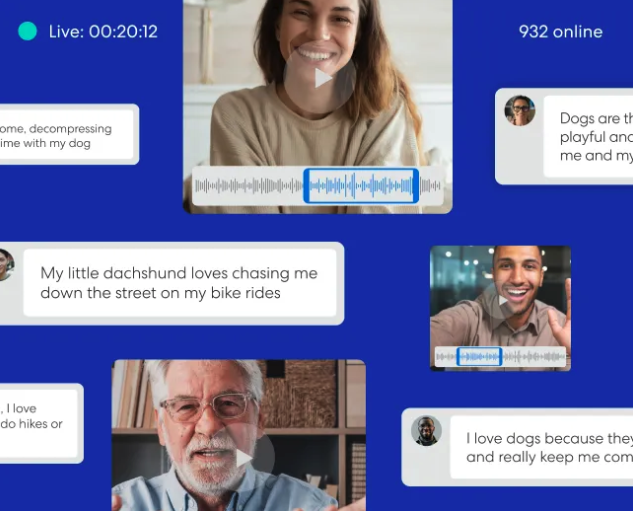
Advanced Research
The Most Cutting-Edge Consumer Insights Software of 2026
Team Remesh
January 5, 2026
Market Research
Articles

Advanced Research
The Most Cutting-Edge Consumer Insights Software of 2026
Team Remesh
January 5, 2026
Market Research
Articles

Research 101
Introducing: Poll Comparison - Streamline Concept Testing and Make Better Decisions Faster
Emmet Hennessy
November 24, 2025
Market Research
Articles

Research 101
Introducing: Poll Comparison - Streamline Concept Testing and Make Better Decisions Faster
Emmet Hennessy
November 24, 2025
Market Research
Articles

AI
Purpose-Built for Research AI is Here - a Letter from the CPO
Jessica Dubin
October 21, 2025
Market Research
Articles

AI
Purpose-Built for Research AI is Here - a Letter from the CPO
Jessica Dubin
October 21, 2025
Market Research
Articles

Advanced Research
Unlock Agile Global Insights: Using Remesh Multi-Language Conversations for Research Across Audiences
Customer Success Team
October 14, 2025
Market Research
Articles

Advanced Research
Unlock Agile Global Insights: Using Remesh Multi-Language Conversations for Research Across Audiences
Customer Success Team
October 14, 2025
Market Research
Articles

AI
The Prompt Is the New Moderator Guide
Anthony Lam
September 16, 2025
Market Research
Articles

AI
The Prompt Is the New Moderator Guide
Anthony Lam
September 16, 2025
Market Research
Articles

AI
Building an AI-Ready Research Stack: Beyond Data Preparation
Anthony Lam
September 9, 2025
Market Research
Articles

AI
Building an AI-Ready Research Stack: Beyond Data Preparation
Anthony Lam
September 9, 2025
Market Research
Articles

AI
Agentic AI for Research: A Practical Primer
Dan Reich
September 2, 2025
Market Research
Articles

AI
Agentic AI for Research: A Practical Primer
Dan Reich
September 2, 2025
Market Research
Articles
Qualitative Research Methods: When Medium Matters (And When It Doesn't)
Qualitative research can be confusing, especially when deciding on the best approach. This article clarifies the difference between research methods and mediums, helping you design more effective studies.



Market researchers are no strangers to the ongoing debate about how best to conduct qualitative research methods. Should studies be in-person or remote? Text-based or video? We understand how frustrating it can be when conversations get bogged down in these details. But here's the key: many teams unknowingly conflate the medium of research with the method itself.
This isn't just about semantics. Clarifying the difference between method and medium can lead to more efficient research design, better processes, and ultimately better outcomes.
In this article, you'll learn when medium actually matters for research quality, how to make smart choices about research design, and how new advances in methodology are changing the way we collect and verify data. That way, you can get back to doing what you do best: uncovering insights that drive meaningful change.
Qualitative research method versus medium
Qualitative research methods and the mediums used to conduct them are fundamentally different things. A research method, like interviews, focus groups, or diary studies, defines how we gather information and insights. The medium is simply the channel through which we conduct that method. This might be in-person, over the phone, through video, or via text. This distinction matters because switching mediums doesn't change or advance the method itself.
"We moved from in-person to telephone to video," explains Suzanne Walsh, Research Consultant at Remesh. "We've changed the medium, but we didn't change the interview itself. The method remains the same."
When researchers analyze qualitative data, they work with transcripts, whether from one-on-one interviews, group discussions, or online forums. The words mean the same thing no matter how they were collected. For example, conducting interviews via video is absolutely more convenient than in-person, but it doesn't offer additional benefits than in-person
What pushes research forward
The real challenge in qualitative research isn't about medium, it's about achieving both breadth and depth while maintaining data quality. AI-powered platforms like Remesh represent true methodological progress by solving this longstanding challenge.
Remesh occupies a unique position as "quali-quant." It's neither purely qualitative nor quantitative, but a groundbreaking hybrid that offers capabilities previously impossible in market research. The platform's "percent agree" algorithm, for example, quantifies agreement on qualitative responses in real-time, something unattainable in traditional qualitative research methods.
"That's what's so unique about it and what makes it different from a bulletin board," Suzanne explains. "Every verbatim will have an agreement score attached to it. In a bulletin board, if participants interact with each other, they might say 'yeah, I agree with what he's saying,' but not everybody speaks up."
This tackles a persistent challenge in qualitative research. Many quantitative researchers find qualitative work daunting because, no matter the method, they can't measure it or put numbers to it. Remesh changes this by providing specific agreement scores for qualitative responses.
When medium matters
Most of the time, the medium you use to collect qualitative research doesn't affect your results, but choosing the right medium can affect your efficiency and practical outcomes. For instance, conducting interviews via video might be more convenient than coordinating in-person sessions. However, medium is sometimes integral to the method itself.
The best example is experiential research where video is integral to the method. This might include watching how customers shop in stores, seeing how people use products in their homes, or understanding how people interact with their environment. In these cases, researchers need visual observation via video to capture authentic behavior.
"If you're looking at experience research," Suzanne notes, "if it's place-based, like watching how someone looks at items on a shelf, how they read labels, what catches their eye, you can use video effectively." This type of observational research differs fundamentally from simply recording a conversation or interview.
The importance of data triangulation
Quality research depends on verified data. Researchers have long used data triangulation, verifying findings through multiple methods, to ensure quality. Observational insights from experiential video research, for instance, become more powerful when verified through other approaches.
After observing behaviors through video, researchers need to validate their observations across a larger population. The key question isn't how you collect data, but whether your method gives you reliable, verifiable insights.
"Good quality data is verified data," Suzanne emphasizes.
Remesh's ability to gather responses from many participants simultaneously offers one way to verify findings quickly. Researchers can confirm whether observed behaviors represent common patterns or outliers across a broader population. This combination of depth and scale allows researchers to make confident, actionable decisions based on verified insights.
Other key considerations for research success
In addition to ensuring data quality, it's vital to have a clear research question. Clear research questions shape everything that follows. While the pressure to move quickly can tempt researchers to rush ahead, taking time to develop strong research questions pays off.
Think beyond methodology and medium to purpose. What do you need this data to do for you? Whether it's answering strategic questions or developing new products that meet customer needs, the research objective should drive methodological choices.
Researchers should also remain open to new approaches. Sometimes you need to shake up traditional methods to get fresh insights. In a field with constant innovation, focusing too much on specific mediums might cause you to miss more effective ways to gather actionable insights.
Wrapping up qualitative research methods and mediums
Understanding the difference between qualitative research methods and mediums helps researchers make more strategic choices. Whether choosing between interviews, be it video or in-person, or focus groups, what matters most is matching your approach to your research objectives. Some methods, like observational research, require specific mediums. Others benefit more from scale and verification than from the medium used to collect data.
AI-driven platforms like Remesh represent one way that research continues to evolve, offering new possibilities for gathering and validating insights. The most effective research strategies often combine different approaches, using each method's strengths to build a complete, verified understanding of consumer behavior and opinions.
I want to validate my insights!
-
Lorem ipsum dolor sit amet, consectetur adipiscing elit. Suspendisse varius enim in eros elementum tristique. Duis cursus, mi quis viverra ornare, eros dolor interdum nulla, ut commodo diam libero vitae erat. Aenean faucibus nibh et justo cursus id rutrum lorem imperdiet. Nunc ut sem vitae risus tristique posuere.
-
Lorem ipsum dolor sit amet, consectetur adipiscing elit. Suspendisse varius enim in eros elementum tristique. Duis cursus, mi quis viverra ornare, eros dolor interdum nulla, ut commodo diam libero vitae erat. Aenean faucibus nibh et justo cursus id rutrum lorem imperdiet. Nunc ut sem vitae risus tristique posuere.
-
More


Introducing: Poll Comparison - Streamline Concept Testing and Make Better Decisions Faster

.png)

.png)
Read More

.png)
.png)
.png)

.png)

.png)
Learn More

.png)
.png)
.png)

Stay up-to date.
Stay ahead of the curve. Get it all. Or get what suits you. Our 101 material is great if you’re used to working with an agency. Are you a seasoned pro? Sign up to receive just our advanced materials.






